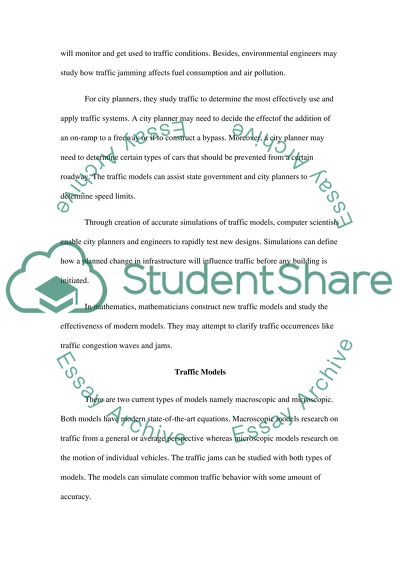Using Mathematics to predict traffic flow Essay Example | Topics and Well Written Essays - 250 words. Retrieved from https://studentshare.org/mathematics/1676191-using-mathematics-to-predict-traffic-flow
Using Mathematics to Predict Traffic Flow Essay Example | Topics and Well Written Essays - 250 Words. https://studentshare.org/mathematics/1676191-using-mathematics-to-predict-traffic-flow.


